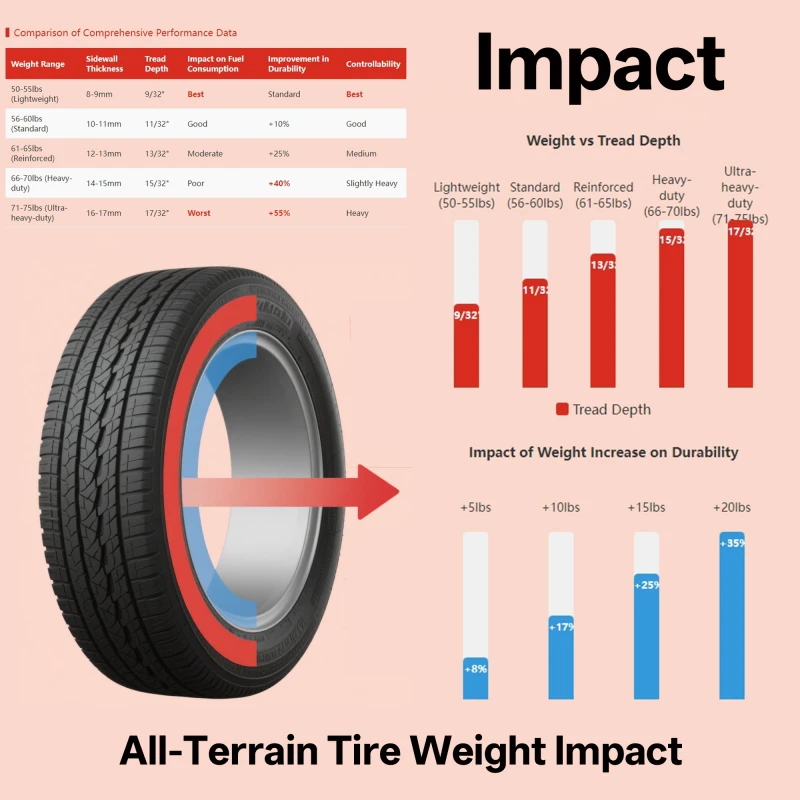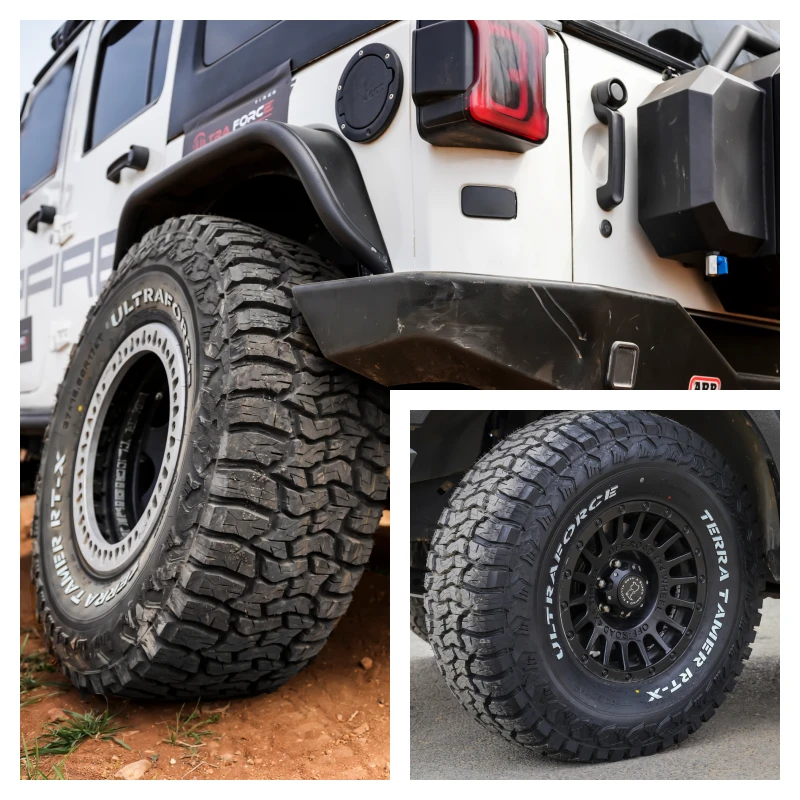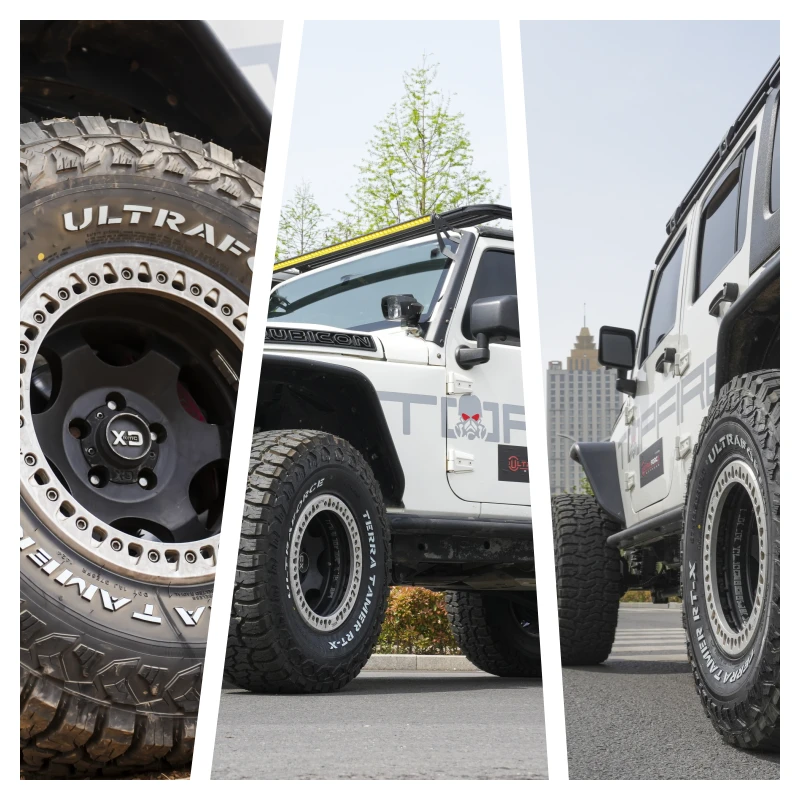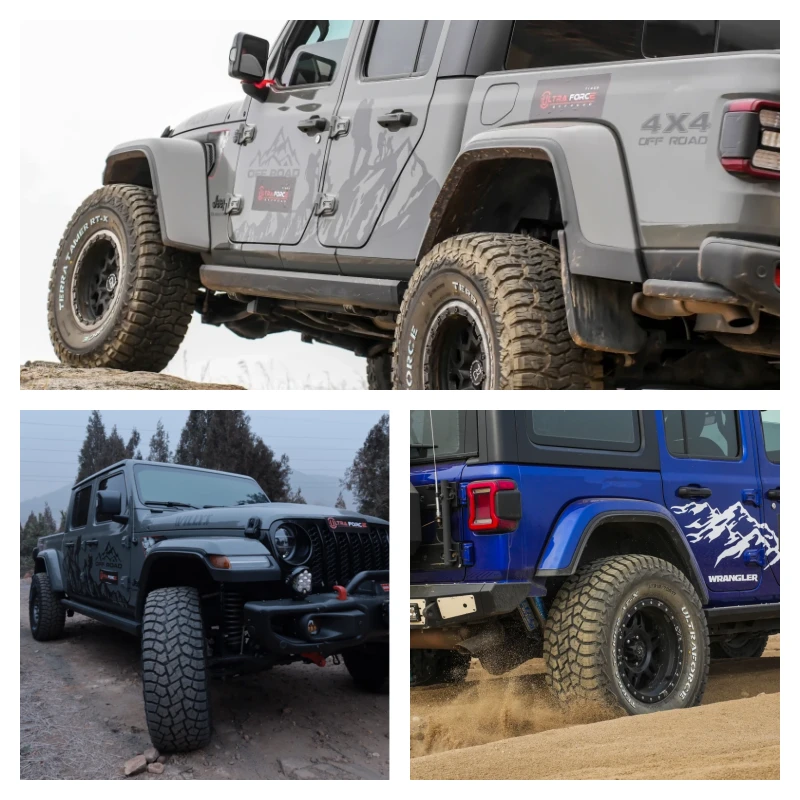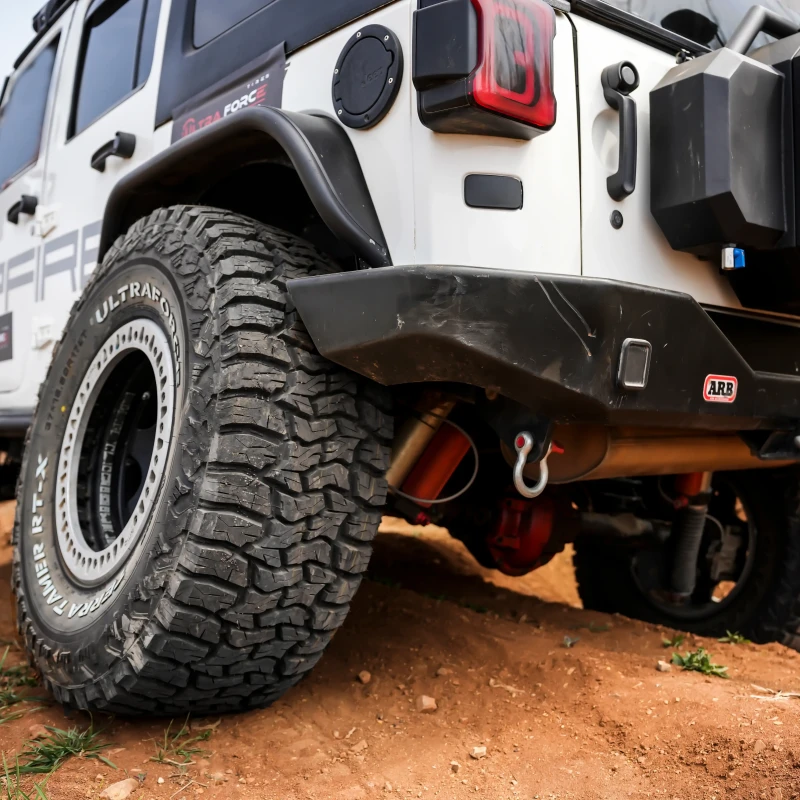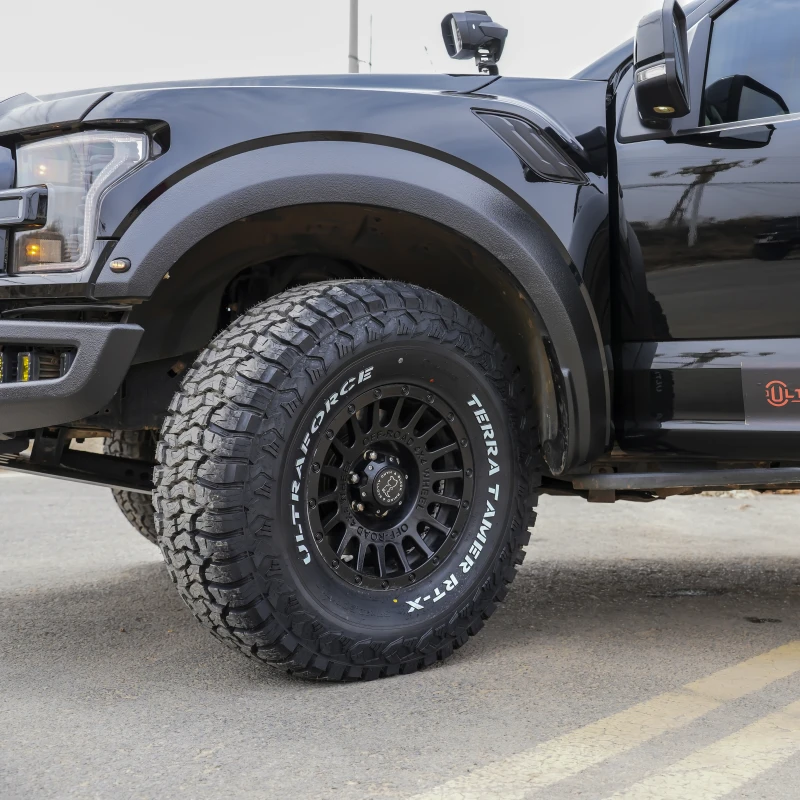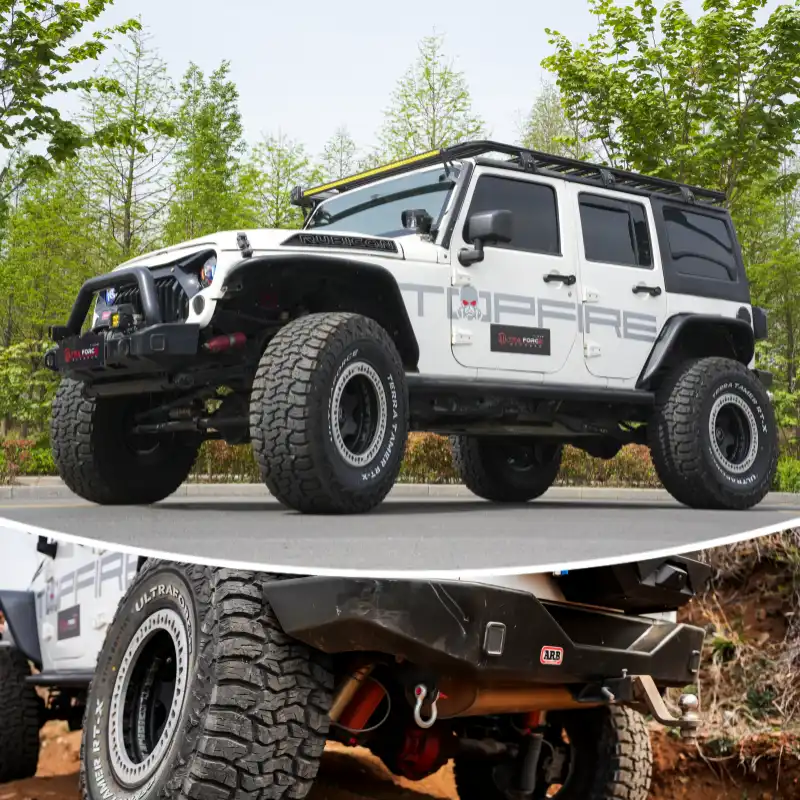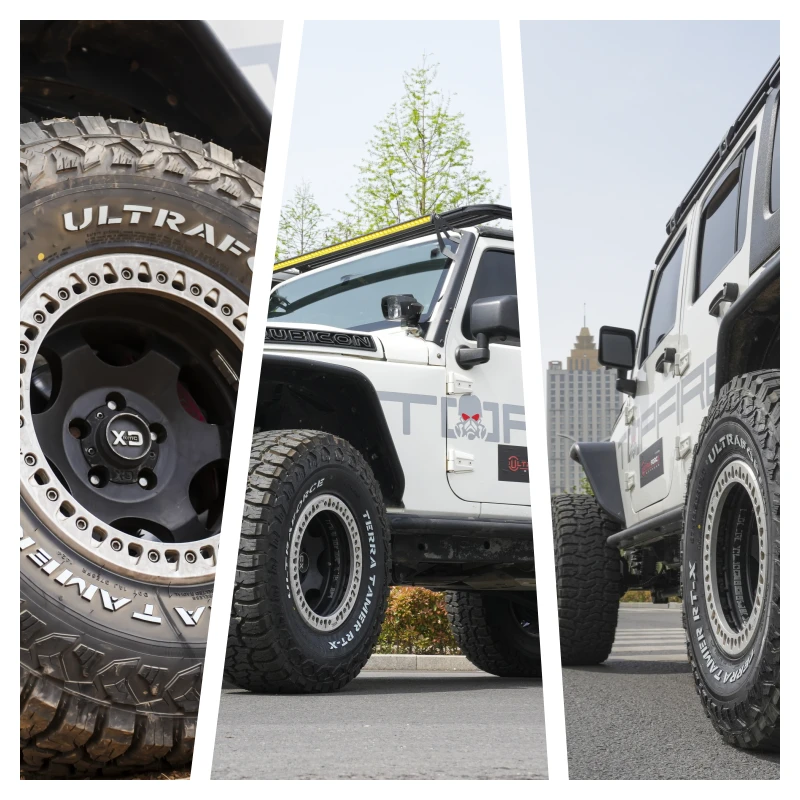When you're building out your off-road rig or just trying to upgrade your daily driver's capabilities for weekend getaways, tire weight is probably not the first thing on your mind. Traction? Sure. Tread design? Absolutely. But tire weight—that unsung hero or hidden villain—can drastically influence your fuel economy, suspension wear, acceleration, and even the all-important ride comfort. Especially in the world of All-Terrain (A/T) tires, where durability and versatility often come at the cost of added mass, a deeper dive into tire weight comparison can reveal surprising insights.
Let’s get into the weeds (or should we say, the mud pits?) and examine just how different A/T tires stack up in terms of weight, and what that means for your vehicle’s performance. Plus, we’ll introduce a brand that’s changing the off-road game—UltraForce Tires—because innovation doesn’t stop at tread patterns.
Why Does Tire Weight Matter in All-Terrain Tires?
To an average driver, 3 to 5 pounds of extra rubber may not seem like a big deal. But for anyone serious about off-roading, overlanding, or even just spirited driving on rough roads, it adds up.
Here’s how tire weight sneaks up on you:
Fuel Economy: Heavier tires increase rotational mass. Your engine works harder, drinks more fuel.
Handling: That extra weight impacts how your suspension performs. Heavier tires feel sluggish in turns and on uneven surfaces.
Braking Distance: Heavier tires often mean longer stopping distances, which can be critical off-road or in emergencies.
Acceleration Lag: Increased unsprung weight can slow your take-off, especially in vehicles with smaller engines.
So, should you always go for the lightest tire possible? Not necessarily. A lighter tire might sacrifice sidewall strength, tread depth, or puncture resistance—all crucial for aggressive off-roading. The sweet spot lies in the balance of weight, performance, and durability.
Comparative Data: Let’s See the Numbers
To truly understand how A/T tires measure up in the weight department, we’ve compiled data on six popular models, all in the same size category—LT265/70R17—a common fitment for trucks and SUVs. This includes big-name brands... and a rising star.
Table 1: Weight Comparison of All-Terrain Tires (LT265/70R17)
| Tire Model | Weight (lbs) | Tread Depth (32nds) | Load Rating |
|---|---|---|---|
| BFGoodrich All-Terrain T/A KO2 | 55.3 | 15 | E |
| Goodyear Wrangler All-Terrain Adventure | 52.0 | 12 | E |
| Falken Wildpeak A/T3W | 57.9 | 17 | E |
| Michelin LTX A/T2 | 50.7 | 13 | E |
| Cooper Discoverer AT3 XLT | 54.2 | 16 | E |
| UltraForce TerraMax A/T Pro | 53.5 | 16 | E |
As you can see, the UltraForce TerraMax A/T Pro sits very comfortably in the mid-range for weight, while delivering aggressive tread depth (16/32nds) that rivals the heaviest contenders like the Falken Wildpeak A/T3W. It’s a careful compromise that leans toward performance without tipping the scale—literally.
How Weight Relates to Tread Design and Longevity
Naturally, deeper treads mean more rubber, and more rubber means more weight. This is a trade-off many tire engineers wrestle with. Deeper treads offer superior mud-clearing, snow grip, and longevity, but they also push the needle on your scale.
Interestingly, some tire makers, including UltraForce, are rethinking the weight-to-tread balance using advanced rubber compounds and innovative tread architecture. The result? Tires that grip like beasts, wear slowly, and yet don’t break your axles—or your fuel budget.
Table 2: Tread Depth vs. Weight Correlation
| Tire Model | Tread Depth (32nds) | Weight (lbs) |
|---|---|---|
| Falken Wildpeak A/T3W | 17 | 57.9 |
| Cooper Discoverer AT3 XLT | 16 | 54.2 |
| UltraForce TerraMax A/T Pro | 16 | 53.5 |
| BFGoodrich KO2 | 15 | 55.3 |
| Michelin LTX A/T2 | 13 | 50.7 |
| Goodyear Wrangler Adventure | 12 | 52.0 |
Again, UltraForce positions itself smartly—matching deeper tread depth while keeping weight lower than other high-lug contenders.
Real-World Application: Light Enough for Daily, Tough Enough for Trail
It’s one thing to look at numbers. It’s another to feel the difference under your feet—or your seat. Heavier A/T tires may feel solid on a trail, but you’ll notice the extra drag in your daily commute. Lighter tires might give you that snappy throttle response but let you down in soft sand or rocky climbs.
UltraForce’s design philosophy shines here: build tires with versatility baked in. For drivers who straddle the line between work and play, urban and off-road, this makes all the difference. The TerraMax A/T Pro, for instance, is designed not just to perform but to enhance your driving experience, whether you’re towing, climbing, or cruising.
Beyond the Numbers: Branding, Customization, and Performance Engineering
Here’s where UltraForce Tires stands out—not only in competitive specs but in philosophy. This isn’t just about weight or rubber or load ratings. It’s about you—the driver. Their approach is summed up in one bold promise:
"We deliver an outstanding driving experience for ‘U’—you mean a lot to us."
Beyond offering tires that hold their own against legacy brands, UltraForce provides customized solutions—from tread and sidewall design to performance tuning based on your terrain of choice. Whether you’re crawling through rocks or just want a solid A/T that doesn’t burn a hole in your MPG, they’ve got you covered.
Please click here to leave a message.
Light Tire vs. Heavy Tire: What Should You Choose?
You might be wondering: Should I aim for the lightest tire possible?
Let’s break it down based on driving intent:
| Driving Style | Recommended Weight Range | Reasoning |
|---|---|---|
| Daily City Driving | 48–52 lbs | Prioritize efficiency, handling |
| Mixed Use (50/50) | 52–55 lbs | Balanced performance |
| Heavy Off-Roading | 55–58+ lbs | Durability and grip |
If you fall somewhere in the middle—and let’s face it, most of us do—the UltraForce TerraMax A/T Pro, sitting at 53.5 lbs, gives you the best of both worlds.
Future Trends: Can Tire Weight Go Even Lower?
There’s exciting work happening behind the scenes in tire tech. The next wave of A/T tires will likely focus on:
Advanced composite rubber: Stronger yet lighter materials
Hybrid sidewall structures: Balancing rigidity and weight
AI-aided tread design: Minimizing material usage without compromising grip
UltraForce is at the forefront of these innovations, investing heavily in research, global market expansion, and customer-driven development.
Final Thoughts: It's Not Just About the Weight
If we’ve learned anything from this dive into A/T tire weights, it’s this: numbers matter, but context matters more. A heavier tire might give you the rugged dependability you need for Baja-style romps. A lighter tire might be the quiet hero of your daily highway hauls.
But a well-balanced tire—one that’s light enough to perform and tough enough to endure—that’s where the magic is. And UltraForce Tires gets that. With a commitment to quality, customization, and innovation, they're not just another name on the sidewall. They're a trusted partner on every terrain you dare to conquer.
